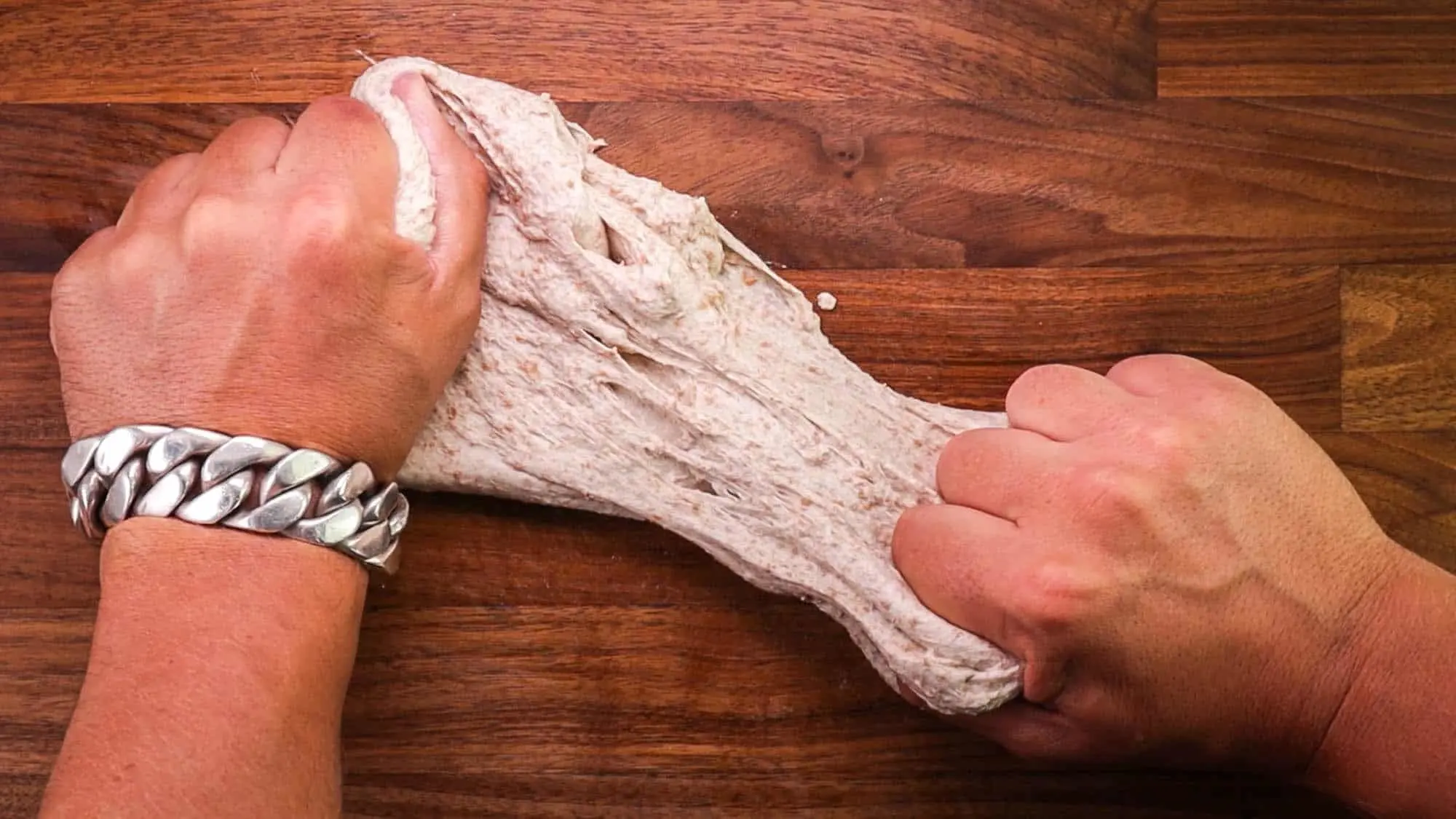Different types of dough require different kneading methods.
A low hydration dough can be kneaded by pressing it into the work surface and folding it at the same time. This method is effective and convenient.
A high hydration dough would not be possible to knead in the regular way. To knead such a dough, we use the ‘stretch and fold’ aka ‘slap and fold’ method.
Kneading time is directly affected by hydration. The more water in your dough the more time you will have to spend kneading it to get sufficient gluten development.
There are steps that can help with reducing kneading time. Autolyse is one and performing a series of folds during bulk fermentation is another. To learn more about these check out the Learning section.
For kneading extremely high hydration dough there is a method called the Roubaud Method. Which is performed inside a bowl by lifting the dough up from the side and aerating it whilst folding at the same time. I personally do not use this method enough because for me it is quite tiring and tedious. And I believe that I can achieve the same result by doing the ‘stretch & folds’ and save some energy in the process.
Knead your dough the way you find most effective and have a great time!
Watch the video here



